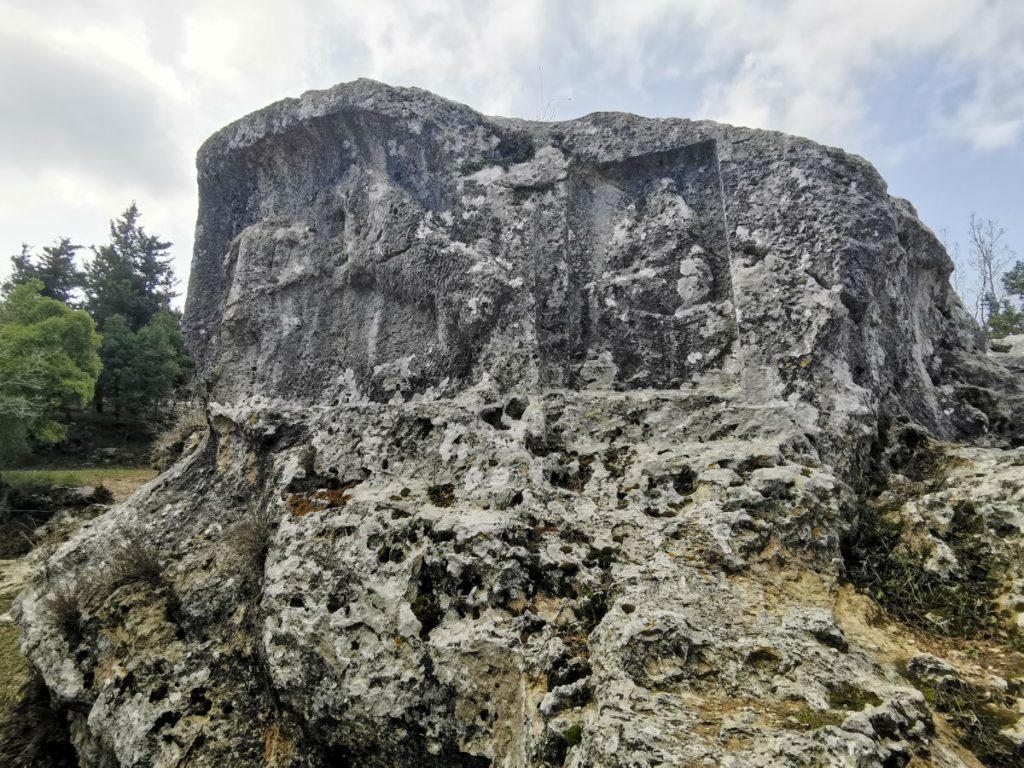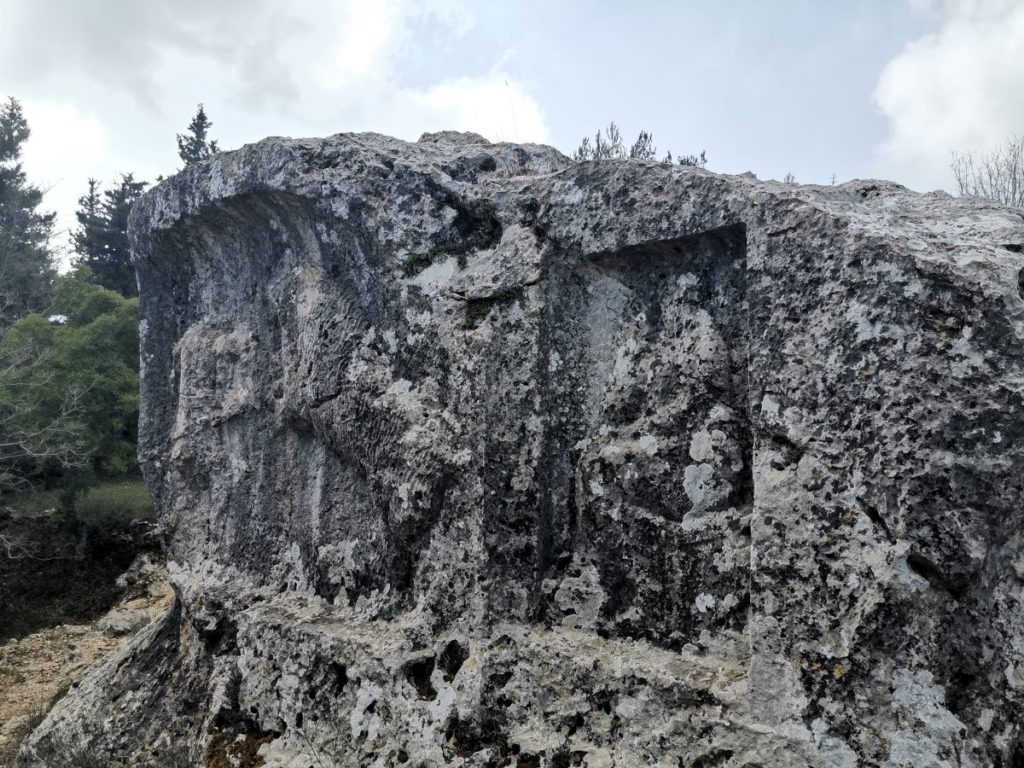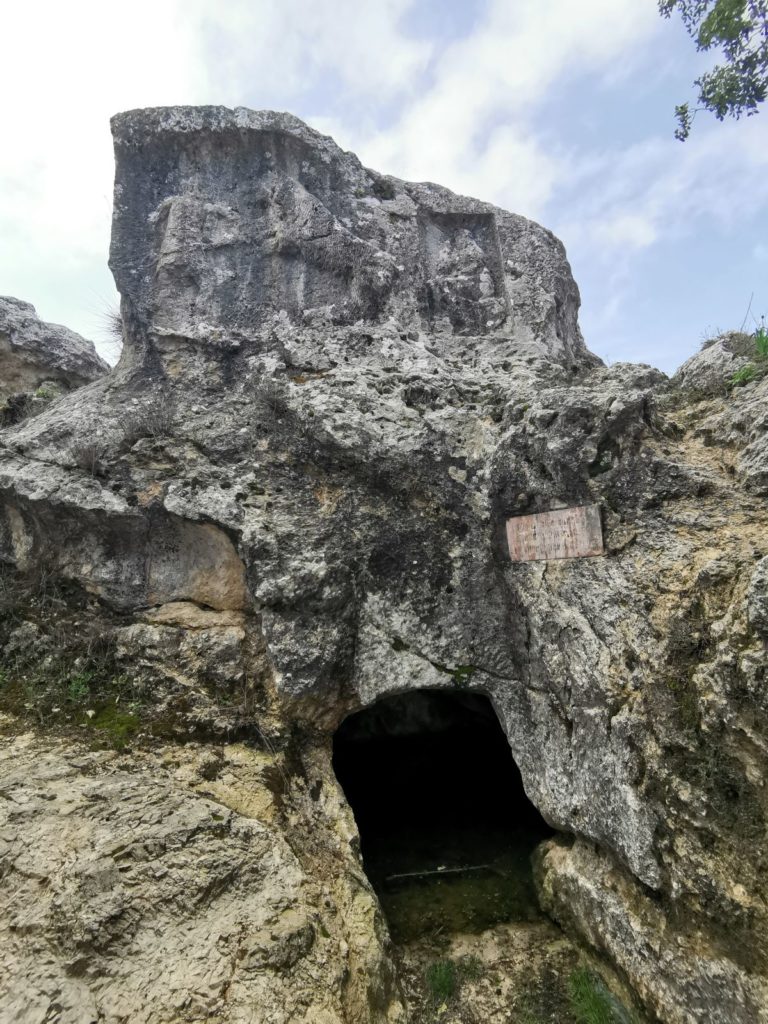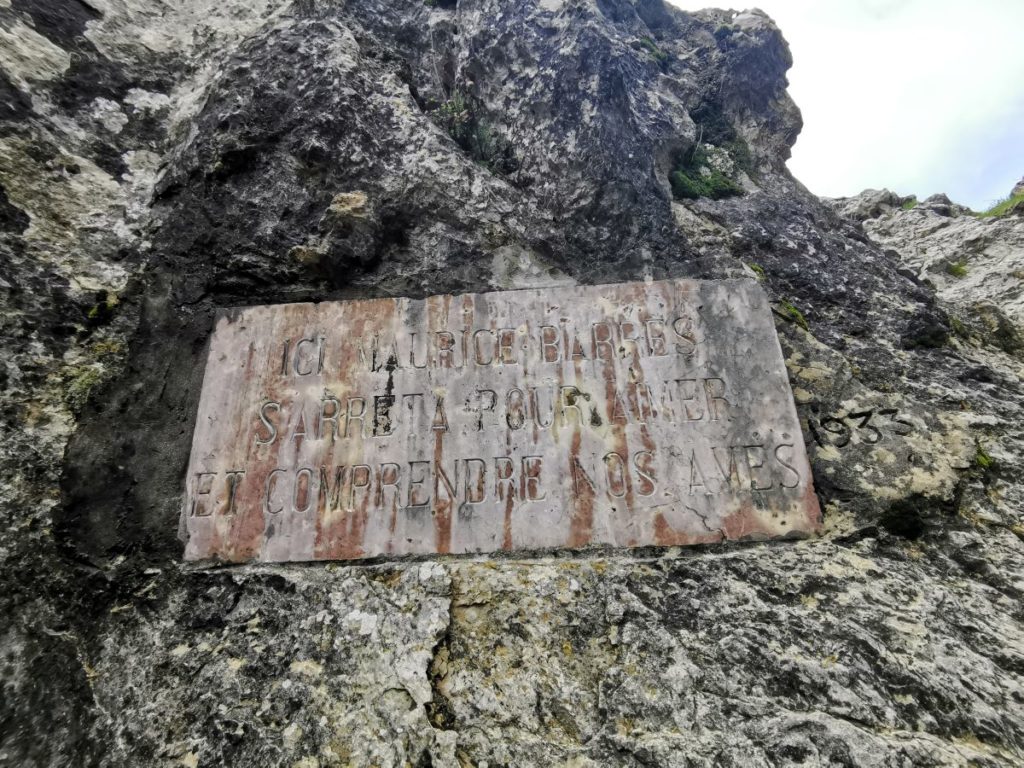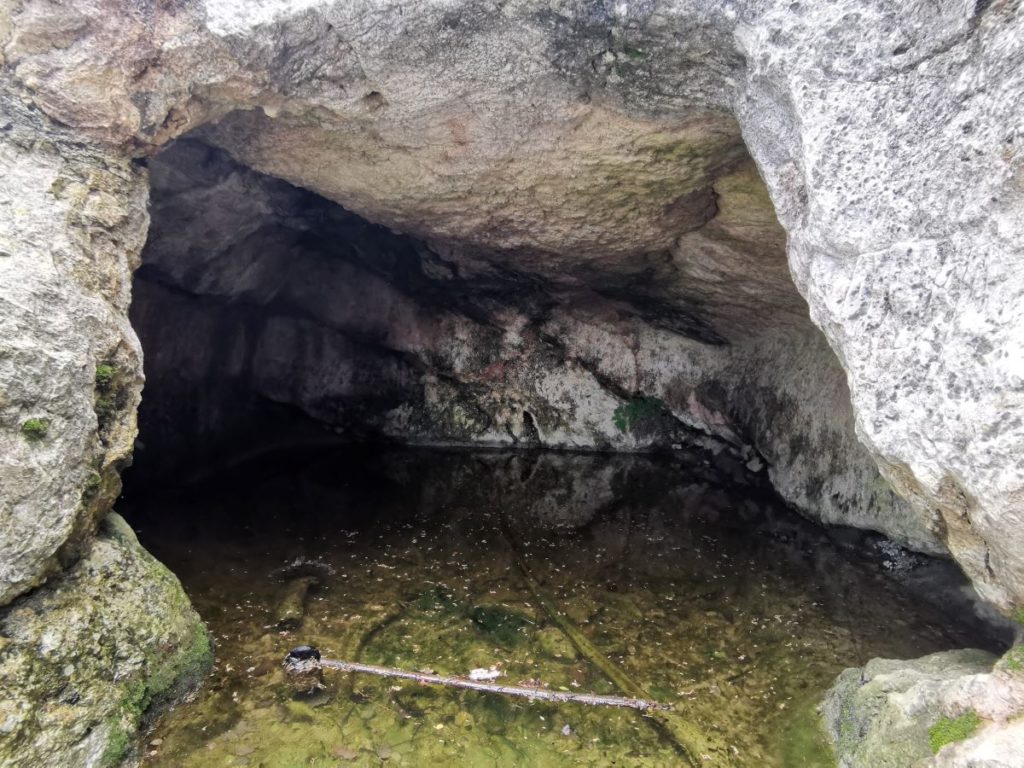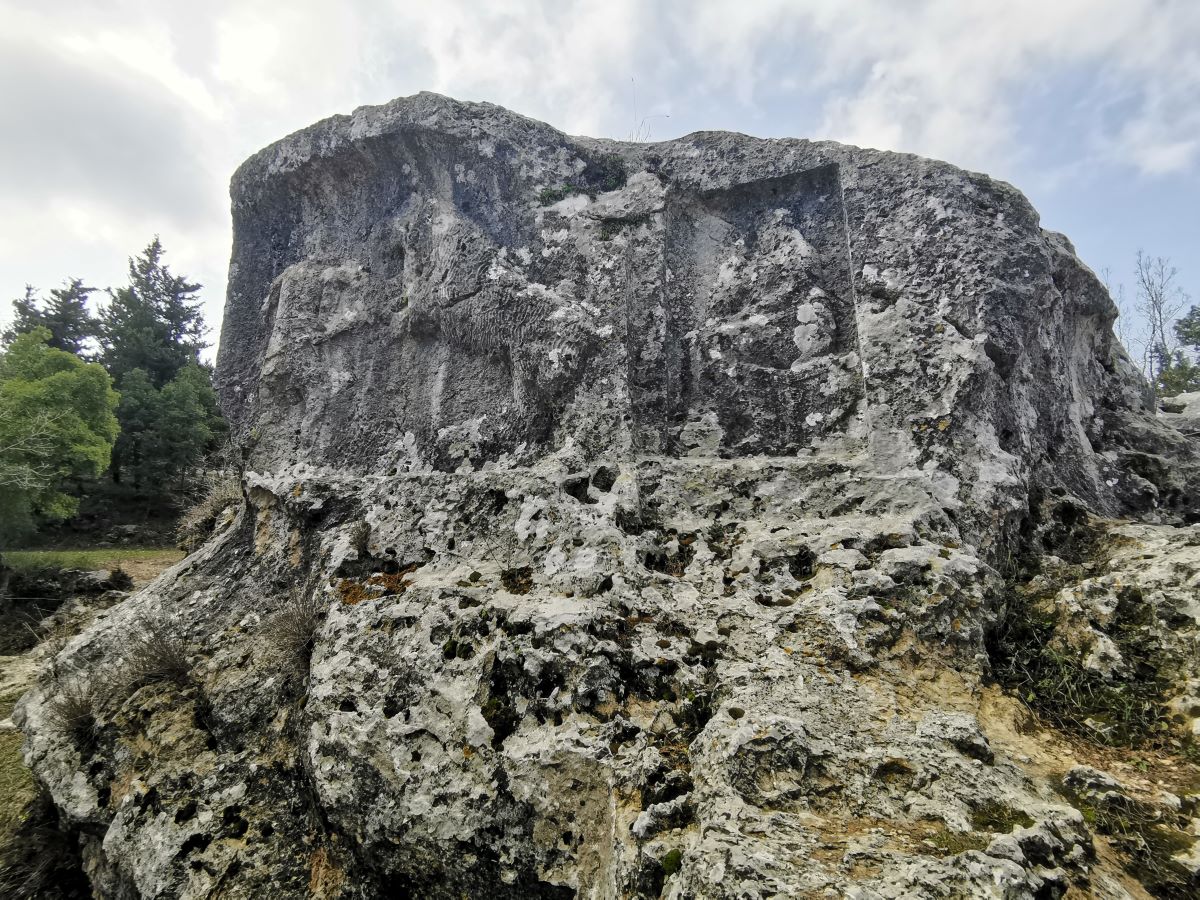El Ghineh village houses a rare local type of stele that date back anywhere between the second half of the first millennium BC and the 3rd century AD.
The stele was first mentioned and described by Ernest Renan during his archeological mission in Lebanon and Syria from 1860 until 1874. Although the stele is barely known to the public, it is an important attraction for what it holds in terms of symbol and effects.
Description
On top of the massive boulder, we can see a scene of a hunter with a spear or javelin in his hand facing a wild animal. The struggle must have ended with the death of both hunter and bear, thus the tomb of the hunter at the bottom of the boulder. A seated woman in a medallion to the right is shown weeping.
At the entrance of the tomb, one can see a fixed sign that reads the following: “Ici Maurice Barres s’arrêta pour aimer et comprendre nos âmes”- a quote stated by Maurice Barres during his visit to Lebanon in 1914. He was a French novelist, journalist and politician who admired the Phoenician past of the area, and one of his favorite visits was to El Ghineh funerary site.
Symbolism
Some scholars suggest that the stele may be linked to funerary rites, same as the steles of Machnaka and Hejoula, whereas the representations depict important figures that passed away, and were honored by representing them on rocks near their tombs. In the case of Ghineh stele, the hunter might be the main subject being honored by members of his village or family.
Accessibility
The stele is easily accessible thanks to the signs fixed by the municipality of El Ghineh.
Karim Sokhn
Tour Operator & Tour Guide
References:
https://www.persee.fr/doc/syria_0039-7946_1940_num_21_2_4185
Mission de Phénicie, Ernest Renan, 1864-74
